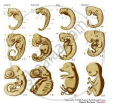Advertisements
Advertisements
प्रश्न
Complete the following diagram:

उत्तर

APPEARS IN
संबंधित प्रश्न
State the connecting links between Peripatus with Annelida and Arthopoda.
Give two examples of vestigial organs in human beings and plants.
If you are asked to select a group of two vegetables, out of the following, having homologous structures which one would you select?
(a) Carrot and radish
(b) Potato and sweet potato
(c) Potato and tomato
(d) Lady finger and potato
An example of homologous organs is
Find out from newspapers and popular science articles any new fossil discoveries or controversies about evolution.
Give the importance of fossil in support of organic evolution
Differentiate between analogous and homologous structures.
Select and write analogous structures from the list given below :
1) Wings of butterfly and birds
2) Vertebrate hearts
3) Tendrils of Bougainvillea and Cucurbita
4) Tubers of sweet potato and potato
Name two animals having homologous organs and two having analogous organs. Name these organs.
Out of bacteria, spider, fish and chimpanzee, which organism has a better body design in evolutionary terms? Give reason for your answer.
Wing of an insect and forelimb of a bird are :
(a) analogous organs
(b) analeptic organs
(c) homologous
(d) homophobic organs
There are five animals A, B, C, D and E. The animal A uses its modified forelimbs for flying. The animal B uses its forelimbs for running whereas the animal C uses its forelimbs for grasping. The animal D can live on land as well as in water and uses its forelimbs to prop up the front end of its body when at rest. The animal E which respires by using spiracles and tracheae uses wings for flying but its wings are analogous to the modified forelimbs of animal A.
(a) What could the animals A, B, C, D and E be?
(b) Why are the forelimbs of animals A, B, C, D called homologous organs?
(c) What does the existence of homologous organs in animals A, B, C and D tell us about their ancestors ?
(d) Why are the modified forelimbs of animal A and the wings of animal E called analogous organs?
(e) State whether animals A and E have a common ancestor or not.
X, Y, and Z are three animals. The animal X can fly but animal Y can only run on ground or walls. The forelimbs of animals X and Y have the same basic design but they are used for different purposes such as flying and running respectively. The animal Z became extinct an long time ago. The study of fossils of Z tells us that it had some features like those of X and some like those of Y. In fact, Z is said to form a connecting link in the evolutionary chain of X and Y.
(a) What could the animals X, Y and Z be?
(b) What name is given to the forelimbs like those of X and Y which have the same basic design but different functions?
(c) Name one feature in which Z resembled X.
(d) Name one feature in which Z resembled Y.
(e) Which is the correct evolutionary chain involving X, Y and Z : X → Z → Y or Y → Z → X?
Identify the following pairs as homologous and analogous organs:
(i) Sweet potato and potato
(ii) Eye of octopus and eye of mammals
(iii) Thorns of Bougainvillaea and tendrils of Cucurbits
(iv) Fore limbs of bat and whale
Explain with suitable examples importance of anatomical evidence in evolution.
Observe the picture and answer the following questions.
A) Which evidence of evolution is shown in the picture?
B) What can be proven with this proof?
C) Give one more example of evidence of evolution
Complete the following chart:

Explain any three molecular (genetic) evidences in favour of organic evolution.
Find an odd one out.
Find an odd one out.
I am a connecting link between reptiles and mammals. Who am I?
The decaying process of C-14 occurs continuously in dead organisms only.
Give scientific reason.
Peripatus is said to be the connecting link between Annelida and Arthropoda.
Observe the given images and answer the following questions.

- Which evolutionary evidence does it indicate?
- What does it prove?
- State another example of evolutionary evidence.
Select vestigial organs from the following.
Which of these is not a vestigial organ in human beings?
Why do all the gametes formed in human females have an X chromosome?
Study of fossils is ______.
Evolutionary convergence is the development of:
Fossils are generally found in ______.
Did aquatic life forms get fossilised? If, yes where do we come across such fossils?
Explain divergent evolution in detail. What is the driving force behind it?
Complete the following chart:

I am the connecting link of annelida and arthropoda. What is my name?
What is the function of the appendix of our digestive system?
Find the odd one out:
Evolutionary convergence is the development of a ______.
Write names of some vestigial organs in the human body.
